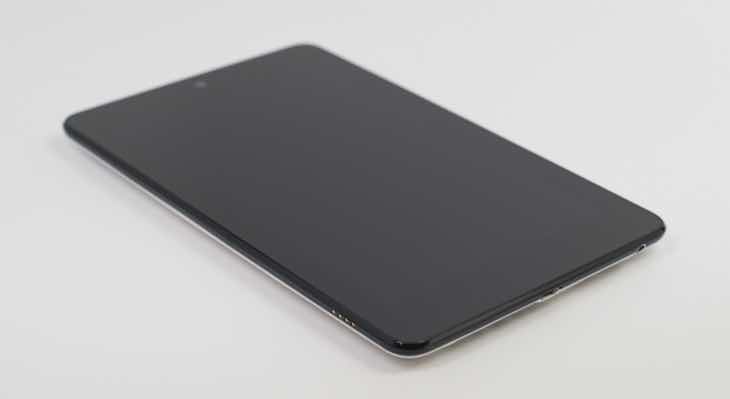Industry and Service
Russia and the US Compete for Control of the UN Technology Group

On Thursday, member nations will decide whether an American or a Russian should head the International Telecommunication Union, which establishes norms for cutting-edge technologies.
In Washington As part of a worldwide conflict between democracies and authoritarian governments over the direction of the internet, the United States and Russia are squabbling for control of a United Nations group that establishes standards for new technology.
In order to elect Doreen Bogdan-Martin, a longtime American employee, to lead the International Telecommunication Union, a U.N. agency that develops technical standards for technology like cellphone networks and video streaming, American officials are urging the organization’s more than 190 other member nations to vote for her on Thursday. Rashid Ismailov, a former representative of the Russian government, is her opponent.
Particularly intense has been the American campaign. Last week, Ms. Bogdan-Martin received the support of President Biden, culminating months of public and private campaigning on her behalf by senior government officials and significant U.S. corporate groups.
Whoever takes over as ITU president will have the ability to change the guidelines by which new technologies are produced globally. The group is not generally recognized, but in recent years it has established important standards for how video streaming operates and coordinated the global sharing of the radio frequencies that power cellular networks.
The election has come to represent the escalating conflict between authoritarian nations that wish to restrict their citizens’ access to the internet and democratic nations that favor a globally connected and lightly governed internet. While the United States usually does not censor the material on social networks like Facebook and Twitter, Russia has developed a mechanism that enables it to do precisely that, keeping an eye on what Russians are saying online regarding issues like the invasion of Ukraine.
Some people are concerned that Russia and China, who have also blocked their internet, may utilize the ITU to alter the web in their image. In a joint statement released last year, the two nations urged the preservation of “the sovereign authority of states to govern the national portion of the internet.” They claimed to be highlighting “the necessity to improve the representation of the two countries in the governing bodies of the International Telecommunication Union”
At an ITU conference this week, Erica Barks-Ruggles, a State Department representative and former ambassador to Rwanda, said the group would assist in determining whether or not people all around the world could affordably access new technologies and interact across borders “whether their governments are able to disconnect them from the internet or not.”
The I.T.U. was established in 1865 to address telegraph machine problems. It used to be more concerned with physical networks than the internet, but it is now involved in establishing standards for everything from connected cars to smart homes. The agency’s biennial plenipotentiary conference got underway on Monday in Bucharest, Romania.
Mr. Biden stated last week that Ms. Bogdan-Martin “possesses the integrity, experience, and vision essential to reshape the digital environment.” Her candidacy has also received support from high administration figures like Secretary of State Antony Blinken, Secretary of Commerce Gina Raimondo, and others.
At a recent conference in Kigali, Rwanda, the United States organized a reception at the city’s conference center where guests watched Vice President Kamala Harris’ video support, listened to local music, and heard a pitch from Ms. Bogdan-Martin.
Requests for response from the Russian Embassy in Washington were not answered.
The election’s proxy conflict might be the first of many.
Bionics
Highly efficient in energy usage and exceptionally precise – A novel frequency comb has been developed by researchers at Stanford University

Researchers at Stanford University have introduced a novel frequency comb, a highly accurate measurement tool. This device exhibits distinctive characteristics such as its compact size, great energy efficiency, and remarkable accuracy. Through ongoing advancements, this revolutionary “microcomb,” as outlined in a paper published in Nature, has the potential to serve as the foundation for widespread implementation of these devices in common electronic gadgets.
Frequency combs are laser devices designed to produce lines of light that are uniformly distributed, resembling the teeth of a comb or, more accurately, the tick marks on a ruler. Over the course of around 25 years, these “rulers for light” have brought about significant advancements in several fields of precise measurement, ranging from timekeeping to molecule detection through spectroscopy. However, due to the need for huge, expensive, and energy-intensive equipment, the usage of frequency combs has primarily been restricted to laboratory environments.
The researchers found a solution to these problems by combining two distinct methods for reducing the size of frequency combs onto a single, readily manufactured, microchip-style platform. The researchers anticipate a range of uses for their adaptable technology, including the development of sophisticated handheld medical diagnostic gadgets and the implementation of ubiquitous greenhouse gas monitoring sensors.
According to Hubert Stokowski, a postdoctoral scholar in the laboratory of Amir Safavi-Naeini and the primary author of the paper, the design of our frequency comb incorporates the most advantageous aspects of emerging microcomb technology within a single device. “Our new frequency microcomb has the potential to be scaled up for compact, low-power, and cost-effective devices that can be deployed in virtually any location.”
Safavi-Naeini, an associate professor in the Department of Applied Physics at Stanford’s School of Humanities and Sciences and senior author of the study, expressed great enthusiasm regarding the recently showcased microcomb technology. This technology has shown promise in developing innovative precision sensors that are compact and highly efficient, potentially suitable for integration into mobile devices in the future.
The process of manipulating light
An Integrated Frequency-Modulated Optical Parametric Oscillator, commonly referred to as FM-OPO, is a novel device.
The tool’s intricate nomenclature suggests that it integrates two methodologies for generating the spectrum of unique frequencies, or hues of light, that comprise a frequency comb. One approach, known as optical parametric oscillation, entails the reflection of laser light beams within a crystal medium, resulting in the formation of coherent and stable wave pulses. The second method uses laser light to enter a cavity, then modifies the phase of the light. This modulation is accomplished by applying radio-frequency signals to the device, resulting in the generation of frequency repetitions that function as light pulses.
The utilization of these two microcomb methods has been limited due to their inherent limitations. The aforementioned concerns encompass energy inefficiency, restricted capacity to modify optical parameters, and inferior comb “optical bandwidth” characterized by the gradual fading of comb-like lines as the distance from the comb’s center rises.
The researchers adopted a novel method to address the difficulty by focusing on a very promising optical circuit platform utilizing thin film lithium niobate as a material. The material possesses favorable characteristics in comparison to silicon, which is the prevailing material in the industry. Two advantageous characteristics of this material are its “nonlinearity,” which enables the interaction of light beams of different hues to produce new colors or wavelengths, and its ability to transmit a wide variety of light wavelengths.
The components of the new frequency comb were fabricated by the researchers through the utilization of integrated lithium niobate photonics. These technologies for controlling light are based on advancements made in the well-established field of silicon photonics, which focuses on the production of optical and electronic integrated circuits on silicon microchips. Both lithium niobate and silicon photonics have built upon the semiconductors used in traditional computer processors, which originated in the 1950s.
According to Safavi-Naeini, lithium niobate possesses distinct characteristics that are not present in silicon, rendering it indispensable for the fabrication of our microcomb device.
Remarkably exceptional performance
Subsequently, the researchers integrated components from optical parametric amplification and phase modulation methodologies. The researchers held specific performance expectations about the new frequency comb system on lithium niobate chips; nonetheless, the observed outcomes beyond their initial expectations.
In general, the comb generated a consistent output instead of brief pulses, allowing the researchers to decrease the necessary input power by roughly ten times. The device also produced a comb that was comfortably flat, indicating that the comb lines located further away from the center of the spectrum did not diminish in intensity. This characteristic enhances the accuracy and applicability of the device in many measurement applications.
Safavi-Naeini expressed astonishment at the comb’s unexpected nature. “Despite our initial intuition that we would observe comb-like behaviors, our intention was not to create a comb of this exact nature. It took us several months to create the simulations and theory that elucidated its primary characteristics.”
In order to get additional understanding of their surpassing device, the researchers sought the expertise of Martin Fejer, who holds the esteemed positions of J. G. Jackson and C. J. Wood Professor of Physics, as well as a professor of applied physics at Stanford University. Fejer, in collaboration with his colleagues at Stanford University, has made significant contributions to the advancement of contemporary thin film lithium niobate photonics technologies and the comprehension of the crystal characteristics of this material.
Fejer (year) established a significant correlation between the fundamental physical principles that underlie the microcomb and the concepts explored in scientific literature during the 1970s. This connection is particularly relevant to the ideas put forth by Stephen Harris, a retired professor of applied physics and electrical engineering at Stanford University.
With additional refinement, the novel microcombs may be easily produced at traditional microchip foundries and have numerous practical uses, including sensing, spectroscopy, medical diagnostics, fiber-optic communications, and wearable health-monitoring systems.
“Our microchip has the capability to be integrated into any device, and the overall size of the device is contingent upon the size of the battery,” stated Stokowski. “The technology we have showcased has the capability to be integrated into a compact personal device, comparable in size to a phone or even smaller, and can be utilized for various practical functions.”
Engineering
Ukrainian officials view ground robots as a significant development in warfare

Milan — The Ukrainian government is currently witnessing a rise in the number of applications submitted by robotics manufacturers seeking to assess the effectiveness of their combat systems. This trend indicates the growing significance of unmanned ground capabilities, particularly in light of the current deadlock on the front lines with Russia.
Brave1, a government defense-technology hub responsible for the development of field-ready capabilities, has recently announced the submission of over 50 ground robotic systems and more than 140 unmanned ground vehicles for evaluation.
In order to improve the Ukrainian army’s capabilities on the battlefield, Brave1 announced on March 12 that it would acquire a sizable number of unmanned ground vehicles (UGVs) through United24. These UGVs are expected to have a transformative impact on the ongoing conflict, similar to the existing role of drones. The Ukrainian government runs a website called United24 that seeks to raise money for the country’s ongoing internal conflicts.
Over the past year, there has been a notable rise in the proliferation of such platforms in military operations, with their utilization and evaluation expanding to encompass a broader range of objectives. Ukrainian social media platforms have lately disseminated video content purportedly showcasing an unmanned ground vehicle (UGV) with the capacity to deploy six anti-tank mines simultaneously.
The online images shared by Brave1 depict a diverse array of compact tracked and wheeled ground robots in motion, armed with firearms, engaged in the evacuation of injured dummies, and seemingly outfitted with technology designed for mine detection.
A prevailing pattern observed in Ukrainian unmanned robots is their tendency to be somewhat light and less weighty compared to their numerous counterparts available on the global market.
According to Nataliia Kushnerska, the project lead at Brave1, Ukraine gains a strategic advantage on the battlefield by employing advanced technological solutions that outperform their adversaries in terms of efficiency, innovation, and cost. These hardware and software products serve as asymmetric responses, capable of altering the configuration during confrontations against the formidable resources of the enemy. This information was conveyed in an email statement to Defense News.
“Ukraine has emerged as a prominent international center for defense technology, and the expansion of this industry will have a crucial impact on Ukrainian defense strategy for many years to come,” she stated.
A considerable quantity of weapons and explosives employed by Russian and Ukrainian military forces persist without detonation, presenting a potential hazard to both military personnel and non-combatants. As of April 2023, it is anticipated that almost 174,000 square kilometers of Ukraine were polluted with landmines.
The impetus to expedite the advancement of Unmanned Ground Vehicles (UGVs) stems from the want to deploy robots for the perilous task of extracting live munitions that remain on the battlefield.
Industry and Service
There is confusion among some regarding the inclusion of “Jeff” on a list of nuclear superpowers

Since the advent of nuclear weapons, we have resided in a world where a full-scale conflict has the potential to annihilate humanity on multiple occasions. Research has indicated that a mere 100 or around 100 bombs had the potential to trigger a global nuclear winter, resulting in the loss of up to 1 billion lives. As of 2023, our nuclear arsenal consists of approximately 12,500 weapons.
Maintaining a record of them is undeniably crucial. It is undesirable to find oneself in a situation similar to the United States, where six nuclear weapons are lost.
Currently, there are nine nations, namely Russia, the United States, China, the United Kingdom, France, Pakistan, Israel, North Korea, and India, that possess nuclear weapons. According to a previous graphic by CNN, which relies on statistics from the Federation of American Scientists, Jeff ranks as the eighth largest holder of nuclear weapons.
Who the fuck is Jeff? pic.twitter.com/r1WGT2dEva
— No Context Brits (@NoContextBrits) March 18, 2024
Although this phenomenon occasionally reemerges, there is no cause for concern regarding the potential instigation of nuclear arms by an individual named Jeff, who harbors dissatisfaction.
who the hell is jeff pic.twitter.com/UlKVBbBLgw
— Bob Vulfov (@bobvulfov) December 31, 2016
Jeff is not a real person. It is an acronym for the Joint Evaluated Fission and Fusion Project, which is a group of countries working together to make a library of nuclear material. It’s possible that Jeff got put on the chart by mistake, making it the tenth largest nuclear weapons owner in the world for a very short time… on a bar chart.
Sorry, everyone. Jeff does not have any nuclear weapons. No matter who plays him—Goldblum, Bezos, or Daniels—this is true. But if it makes you feel better, Pepsi may have owned a fleet of Soviet boats for a short time.
-

 Gadgets9 years ago
Gadgets9 years agoWhy the Nexus 7 is still a good tablet in 2015
-

 Mobile Devices9 years ago
Mobile Devices9 years agoSamsung Galaxy Note 4 vs Galaxy Note 5: is there room for improvement?
-

 Editorials9 years ago
Editorials9 years agoSamsung Galaxy Note 4 – How bad updates prevent people from enjoying their phones
-

 Mobile Devices9 years ago
Mobile Devices9 years agoNexus 5 2015 and Android M born to be together
-

 Gaming9 years ago
Gaming9 years agoNew Teaser For Five Nights At Freddy’s 4
-

 Mobile Devices9 years ago
Mobile Devices9 years agoGoogle not releasing Android M to Nexus 7
-

 Gadgets9 years ago
Gadgets9 years agoMoto G Android 5.0.2 Lollipop still has a memory leak bug
-

 Mobile Devices9 years ago
Mobile Devices9 years agoNexus 7 2015: Huawei and Google changing the game













